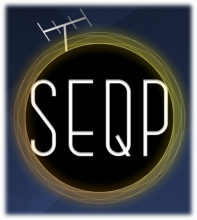SEQP Contest Results Announced
SEQP Contest Results Announced

The SEQP was scored by Nathaniel Frissell, W2NAF and Spencer Gunning, K2AEM. The following text is by Ward Silver, N0AX, and is based on information published on the HamSCI website and the Feb 2018 QST article, “The Solar Eclipse QSO Party” by Ward Silver, NØAX.
The question, “Will anybody participate in the Solar Eclipse QSO Party (SEQP)?” Was answered loud and clear on eclipse day, August 21st. The HF bands were busy from the first minute of the SEQP at 1400 UTC to the closing bell at 2200 UTC. Logs were received from 566 stations. Some operated on all bands, others concentrated on one or two. In total, the SEQP generated over 618,000 RBN spots, 630,000 WSPRNet spots, 1.2 million PSKReporter spots, and 29,000 logged QSOs. The Sun may have taken a lunar nap but the bands were full of life!
How was propagation? Excellent for mid-August, actually! The Sun held off on generating any flares or CMEs so conditions were relatively quiet until well after the SEQP was done and the eclipse no longer visible in North America. During the SEQP, the smoothed sunspot number (SSN) was 44, solar flux hit 83, and KP was 3 or less — pretty good in summer near a solar minimum. These quiet geomagnetic conditions made the contact data more valuable since the effect of disturbances was minimized.
It was fairly conclusively demonstrated that the shadow of the eclipse stops ion production in the ionosphere. Amateurs observed Doppler shifts, phase shifts, and amplitude changes in WWV, WWVB, and AM radio station reception. The SEQP observations suggest the F layer rose and the D layer was depleted during the eclipse. While these effects weren’t unexpected, they have been observed in far greater detail than ever before. This data supports the finely-detailed validation of ionospheric and geomagnetic models against the recorded data. That is where “new science” often happens as unexpected subtle behavior of a natural phenomenon is examined and explained.
The first paper to be published was written by HamSCI founding member, Dr. Nathaniel Frissell, W2NAF — "Modeling Amateur Radio Soundings of the Ionospheric Response to the 2017 Great American Eclipse," in which Reverse Beacon Network (RBN) observations of the SEQP were compared with raytracings through an eclipsed version of the physics- based ionospheric model SAMI3. (The paper was published in the American Geophysical Union journal Geophysical Research Letters – see the HamSCI website for more information.)
This initial HamSCI event echoes the success of amateur-research collaboration reaching back nearly a century to the Listening Tests of the early 1920s establishing the ionosphere’s existence. Here we are again! Stay tuned for the next opportunity to contribute your skills as we “advance the radio art!” Thanks to all the stations who participated around the world, generating valuable data and a chance to learn more about how the ionosphere works.
SEQP Winners
| Single Op | Total Score | Multi-Op | Total Score | |
|---|---|---|---|---|
| 1 | AA3B Bud Trench Boyertown, PA |
403,975 | W0ECC Elayer Contest Club St. Charles, MO (N0AX, N5OT, & KD0YJN) |
191,625 |
| 2 | K4BAI John Laney, III Columbus, GA |
224,502 | W0D DeSoto, MO (WB0SND & WB0TUA) |
112,553 |
| 3 | W1SJ Mitchell Stern Essex Junction, VT |
180,882 | W5GAD Jefferson Amateur Radio Club Metairie, LA (N5LIT, KG5GJT, N5HZ, & NO5W) |
93,651 |
| RBN Call | # Spots | Operator | QTH |
|---|---|---|---|
| WE9V | 54,874 | Chad Kurszewski | Bristol, WI |
| AA4VV | 40,574 | Thomas Berry |
Lexington, NC |
| KU7T | 31,762 | Andreas Hofmann | North Bend, WA |
| N4ZR-3 | 28,692 | Pete Smith | Phoenix, MD |
| NC7J | 28,564 | Utah Contest Club | Layton, UT |
| W3OA | 28,057 | Dick Williams | Mooresville, NC |
| N2GZ | 18,623 | Greg Zenger | North Stonington, CT |
| N0TA | 14,751 | John Reilly | Louisville, CO |
